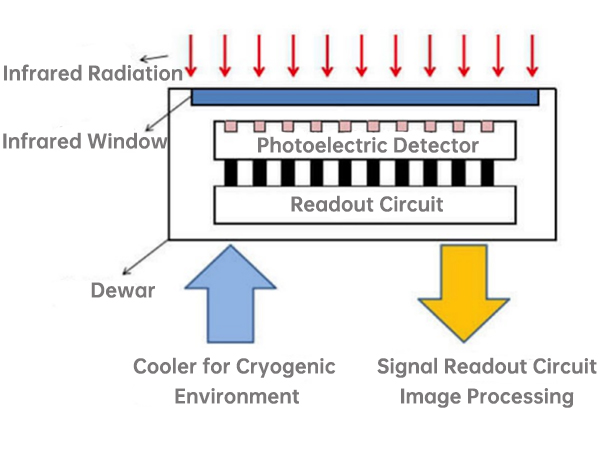Based on operating temperature and cooling needs, infrared detector can be divided into cooled and uncooled. Uncooled thermal imaging sensor works at room temperature, which have slow response and a relatively low sensitivity. While cooled infrared detector works at cryogenic temperature. The reason is that cooled infrared detector is essentially a photon detector and needs to be cooled at low temperatures to perform at its best.
Thermal imaging systems are used to observe heat sources. To obtain maximum system sensitivity, most thermal imaging systems use cryogenically cooled detectors, which typically operate at liquid nitrogen temperatures of 77K or lower. If these focal plane arrays (FPAs) infrared detectors can detect thermal energy beyond the scene being viewed, the sensitivity is reduced.
Additionally, if the magnitude of the non-scene energy varies with the field of view, undesired image distortion can result. To maximize the sensitivity of the system and avoid image distortion, the infrared FPA needs to be cryogenically cooled and mounted in a thermally insulated "bottle" or Dewar assembly. The original systems incorporated miniature vacuum bottles, called dewar, which were filled with liquid nitrogen.

Cooled infrared detector is the core component of cooled thermal imaging system. A suitable low and constant temperature environment is formed by a micro cryo cooler, so that the infrared sensitive photoelectric detector packaged in the main body of the ultra-high vacuum dewar can convert infrared radiation into electrical signals. And then the electric signals will be collected and amplified by the readout circuit to process image and finally output images or videos that can be observed by the human eye.

Go Top